mRNA expression analysis
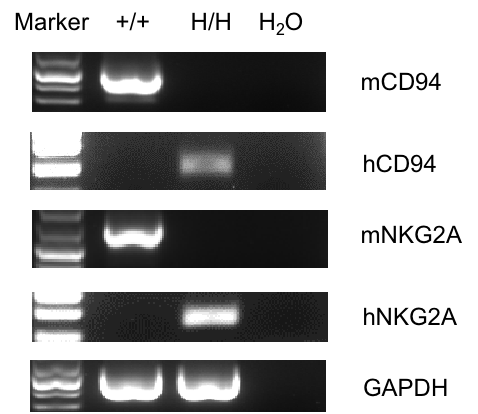
Strain specific analysis of CD94 and NKG2A gene expression in WT and homozygous B-hCD94/hNKG2A mice by RT-PCR. Mouse Cd94 and Nkg2a mRNA were detectable in splenocytes of wild-type (+/+) mice. Human CD94 and NKG2A mRNA were detectable only in the homozygous B-hCD94/hNKG2A, but not in +/+ mice.
Protein expression analysis in NK cells
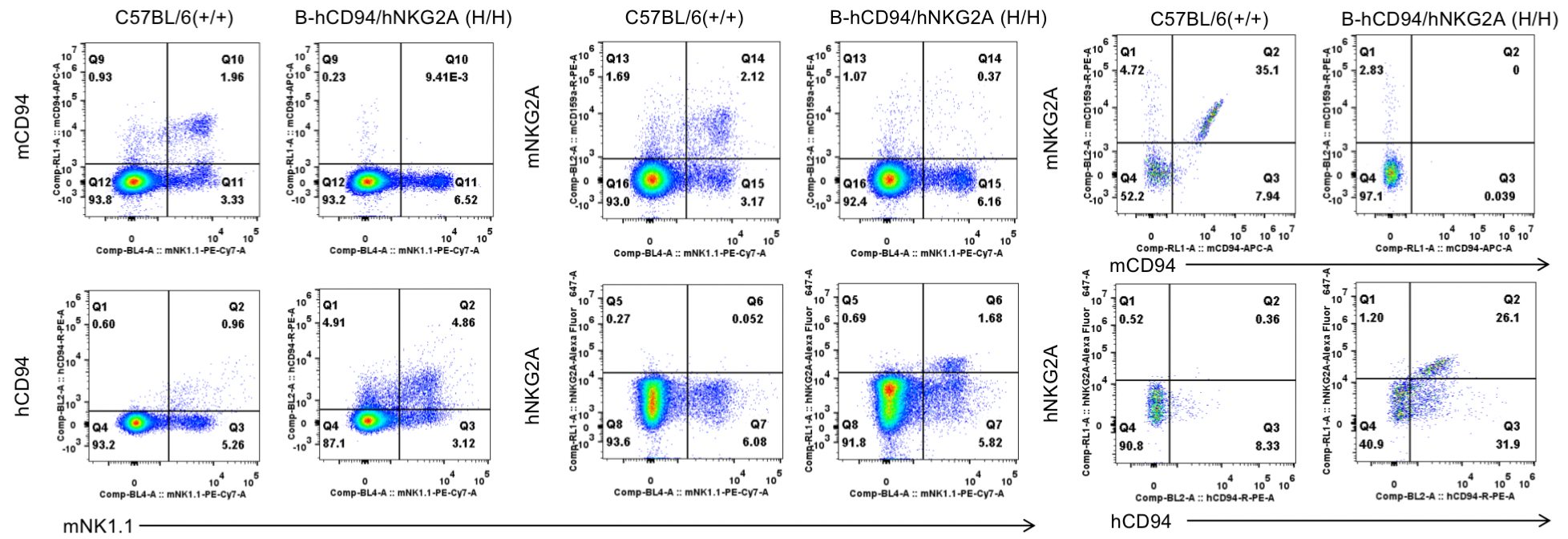
Strain specific CD94 and NKG2A expression analysis in homozygous B-hCD94/hNKG2A mice by flow cytometry. Splenocytes were collected from WT and homozygous B-hCD94/hNKG2A (H/H) mice, and analyzed by flow cytometry with species-specific CD94 or NKG2A antibody. Mouse CD94 and NKG2A were detectable in WT mice. Human CD94 and NKG2A were exclusively detectable in homozygous B-hCD94/hNKG2A but not WT mice. (Monalizumab was used to detect the human NKG2A protein in WT and homozygous B-hCD94/hNKG2A)
Protein expression analysis in activated CD8+ T cells
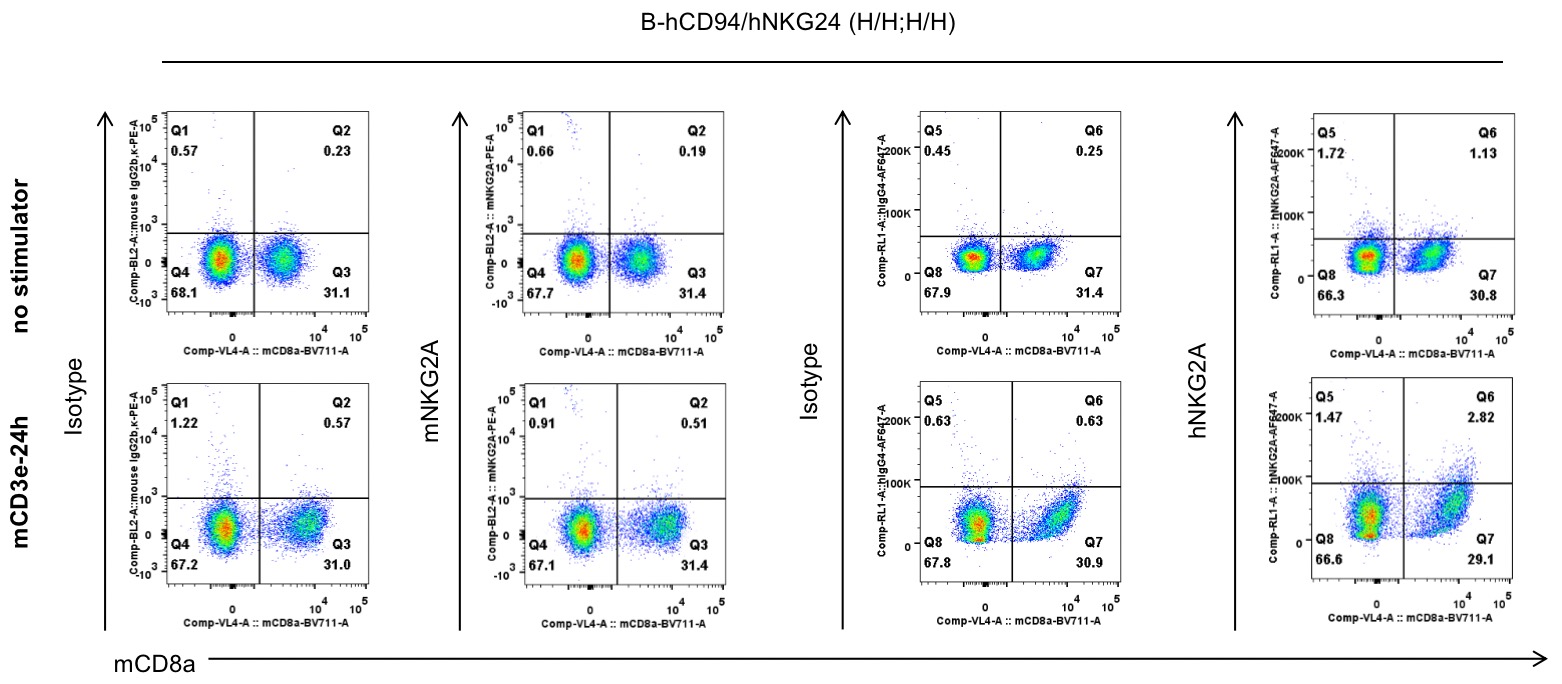
Strain specific NKG2A expression analysis in homozygous B-hCD94/hNKG2A mice by flow cytometry. Splenocytes were collected from homozygous B-hCD94/hNKG2A (H/H) mice, and analyzed by flow cytometry with species-specific NKG2A antibody. Human NKG2A were exclusively detectable in activated CD8+ T cells of homozygous B-hCD94/hNKG2A mice after treated with mCD3e 24h.
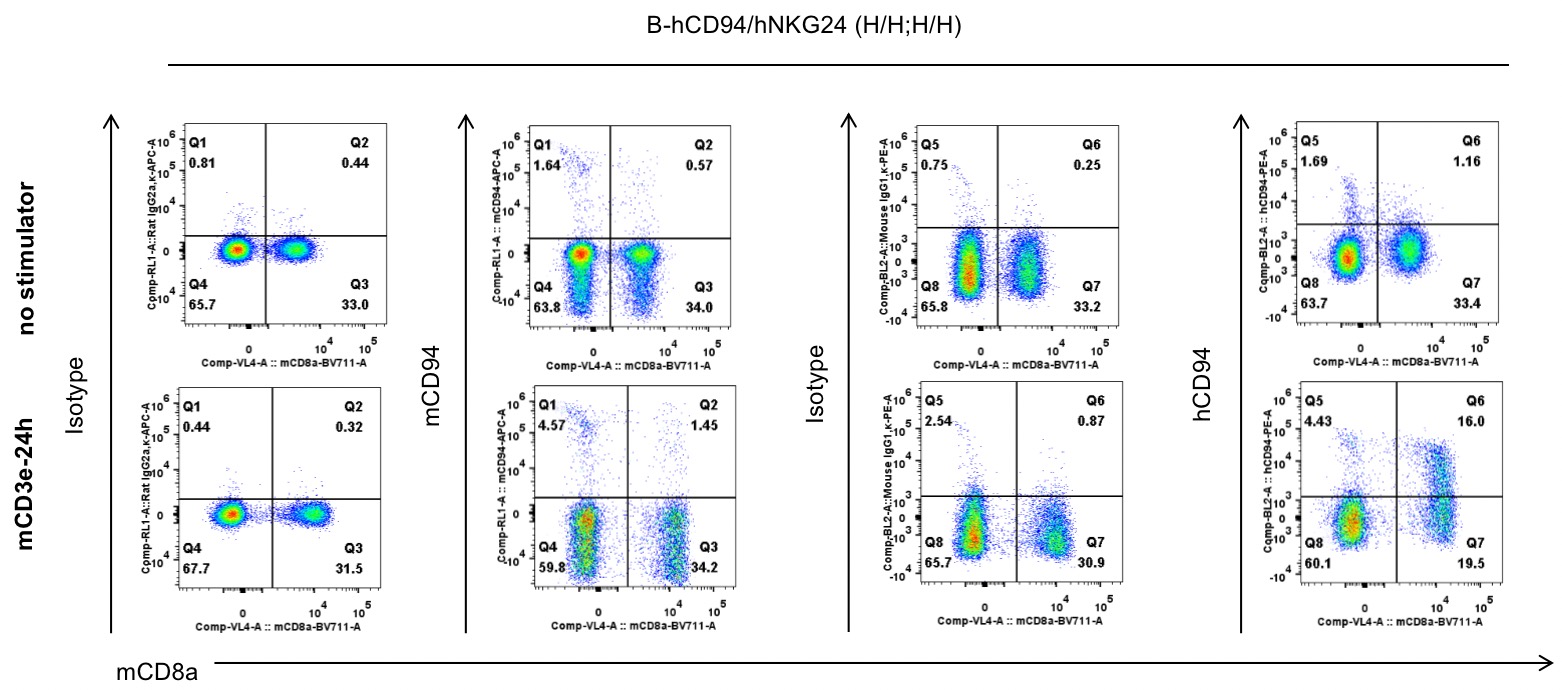
Strain specific CD94 expression analysis in homozygous B-hCD94/hNKG2A mice by flow cytometry. Splenocytes were collected from homozygous B-hCD94/hNKG2A (H/H) mice, and analyzed by flow cytometry with species-specific CD94 antibody. Human CD94 were exclusively detectable in activated CD8+ T cells of homozygous B-hCD94/hNKG2A mice after treated with mCD3e 24h.
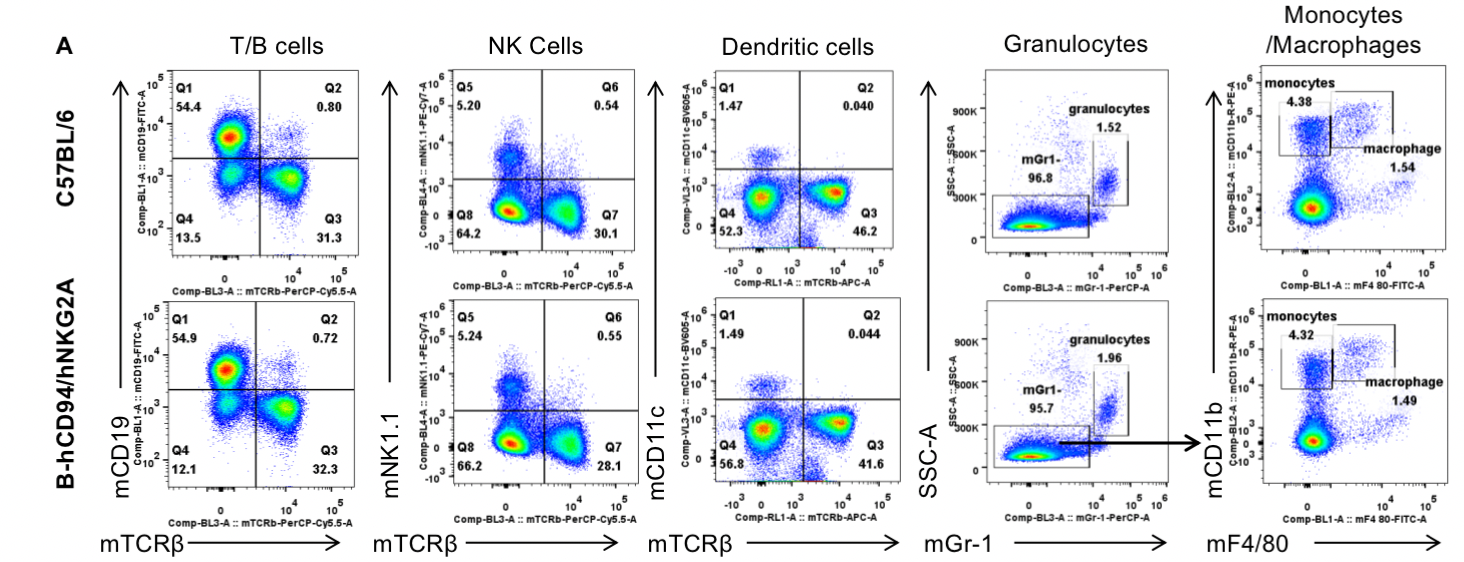
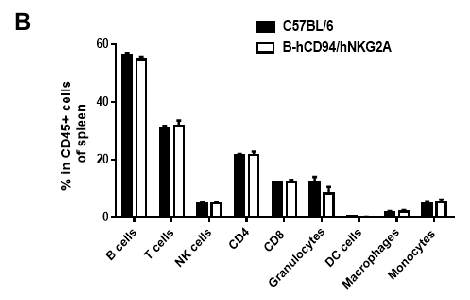
Analysis of splenic leukocyte subpopulations by FACS
Splenocytes were isolated from female C57BL/6 and B-hCD94/hNKG2A mice (n=3, 6 weeks-old) and analyzed by flow cytometry to assess leukocyte subpopulations. (A) Representative FACS plots gated on single live CD45+ cells for further analysis. (B) Results of FACS analysis. Percentages of T, B, NK cells, monocytes/macrophages, and DC were similar in homozygous B-hCD94/hNKG2A mice and C57BL/6 mice, demonstrating that introduction of hCD94/hNKG2A in place of its mouse counterpart does not change the overall development, differentiation, or distribution of these cell types in spleen. Values are expressed as mean ± SEM.
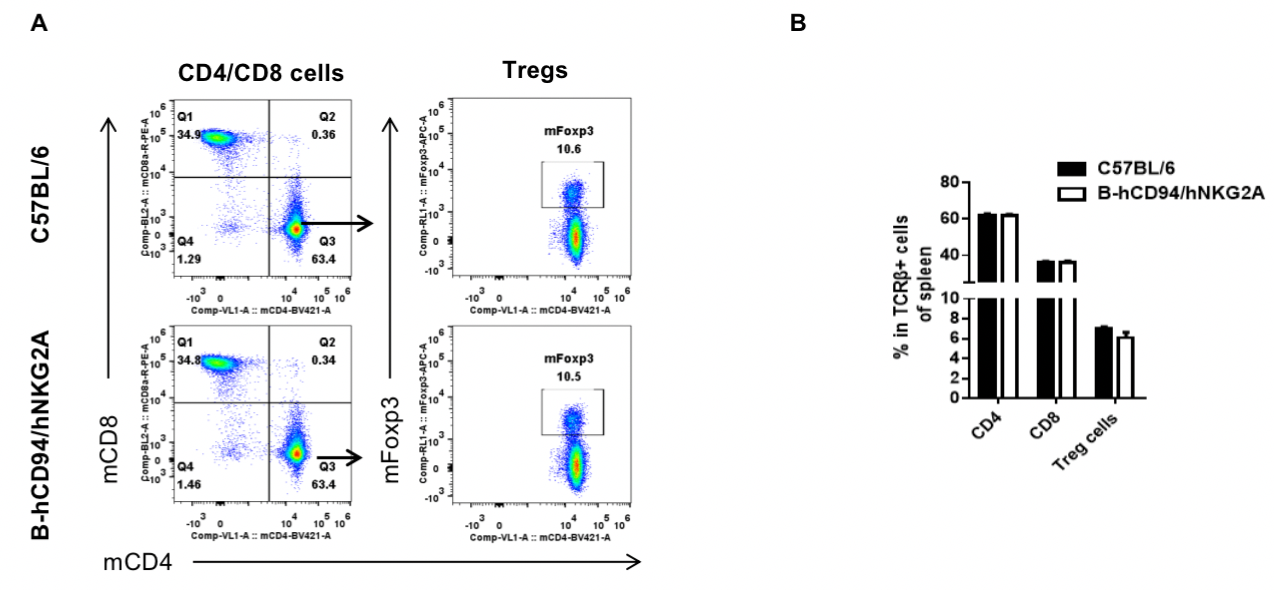
Analysis of splenic T cell subpopulations by FACS
Splenocytes were isolated from female C57BL/6 and B-hCD94/hNKG2A mice (n=3, 6 weeks-old) and analyzed by flow cytometry for T cell subsets. (A) Representative FACS plots gated on TCRβ+ T cells and further analyzed. (B) Results of FACS analysis. Percentages of CD8+, CD4+, and Treg cells were similar in homozygous B-hCD94/hNKG2A and C57BL/6 mice, demonstrating that introduction of hCD94/hNKG2A in place of its mouse counterpart does not change the overall development, differentiation or distribution of these T cell subtypes in spleen. Values are expressed as mean ± SEM.
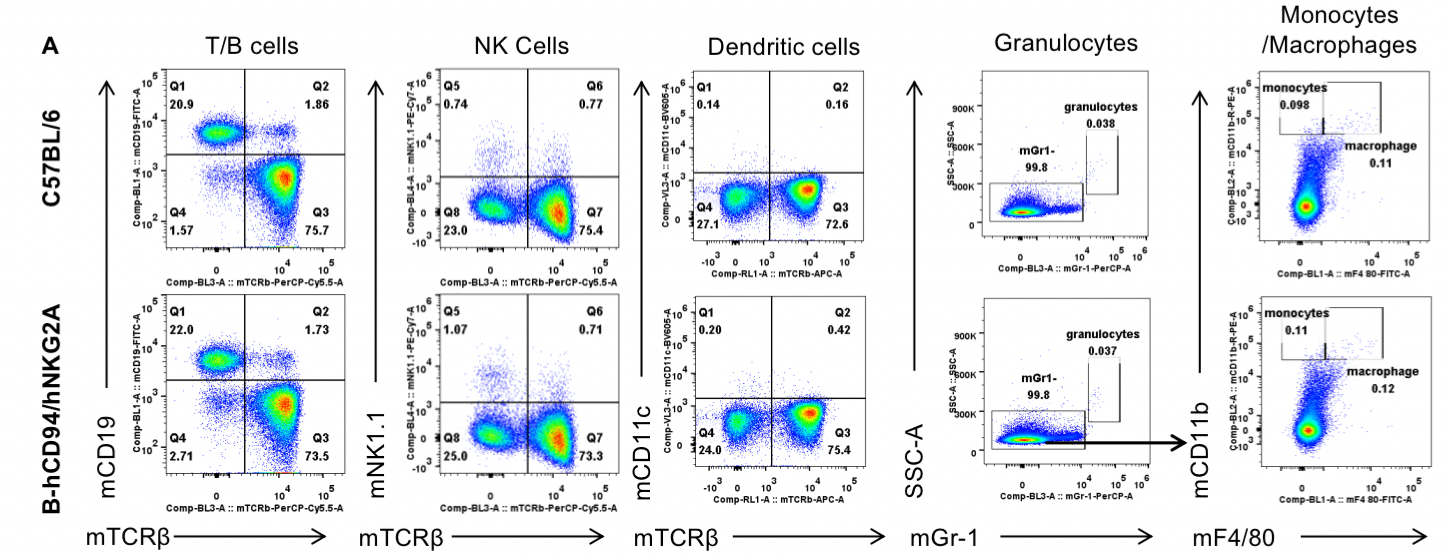
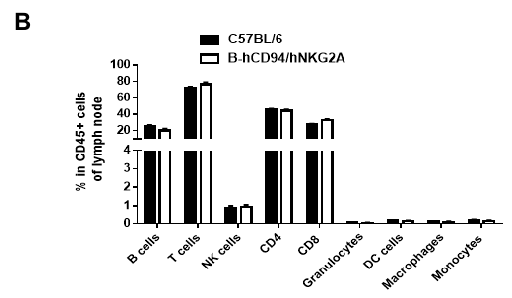
Analysis of lymph node leukocyte subpopulations by FACS
Lymph node were isolated from female C57BL/6 and B-hCD94/hNKG2A mice (n=3, 6 weeks-old) and analyzed by flow cytometry to assess leukocyte subpopulations. (A) Representative FACS plots gated on single live CD45+ cells for further analysis. (B) Results of FACS analysis. Percentages of T, B, NK cells, monocytes/macrophages, and DC were similar in homozygous B-hCD94/hNKG2A mice and C57BL/6 mice, demonstrating that introduction of hCD94/hNKG2A in place of its mouse counterpart does not change the overall development, differentiation, or distribution of these cell types in lymph node. Values are expressed as mean ± SEM.
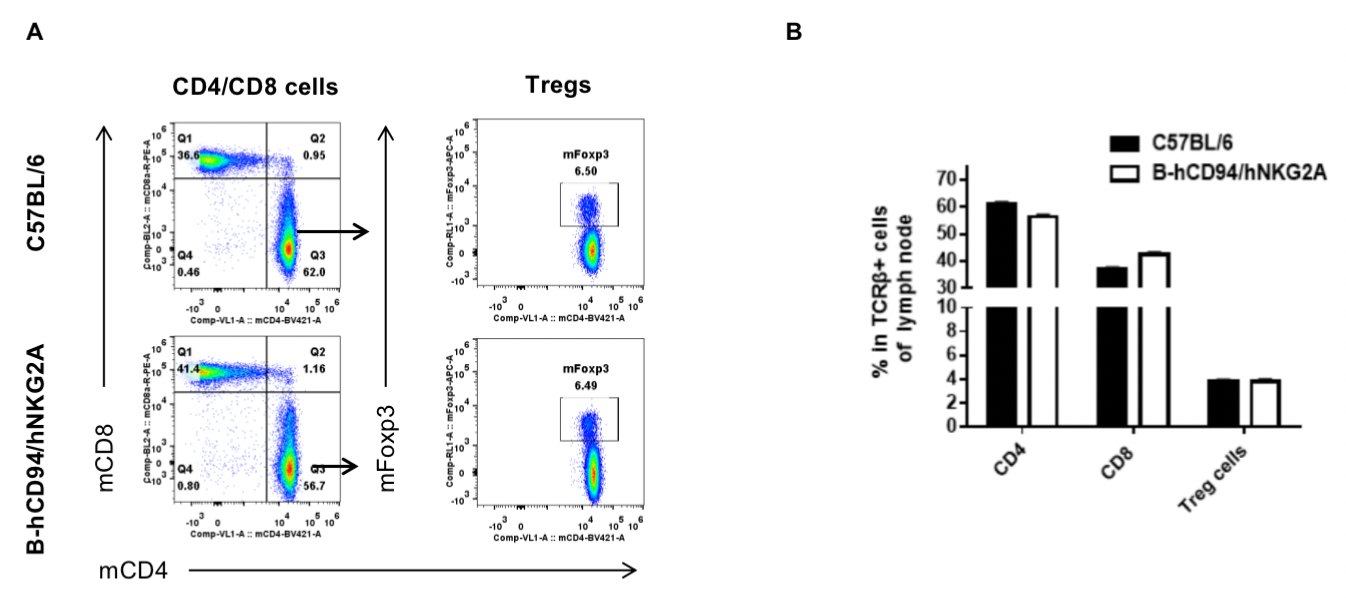
Analysis of lymph node T cell subpopulations by FACS
Lymph node were isolated from female C57BL/6 and B-hCD94/hNKG2A mice (n=3, 6 weeks-old) and analyzed by flow cytometry for T cell subsets. (A) Representative FACS plots gated on TCRβ+ T cells and further analyzed. (B) Results of FACS analysis. Percentages of CD8+, CD4+, and Treg cells were similar in homozygous B-hCD94/hNKG2A and C57BL/6 mice, demonstrating that introduction of hCD94/hNKG2A in place of its mouse counterpart does not change the overall development, differentiation or distribution of these T cell subtypes in lymph node. Values are expressed as mean ± SEM.
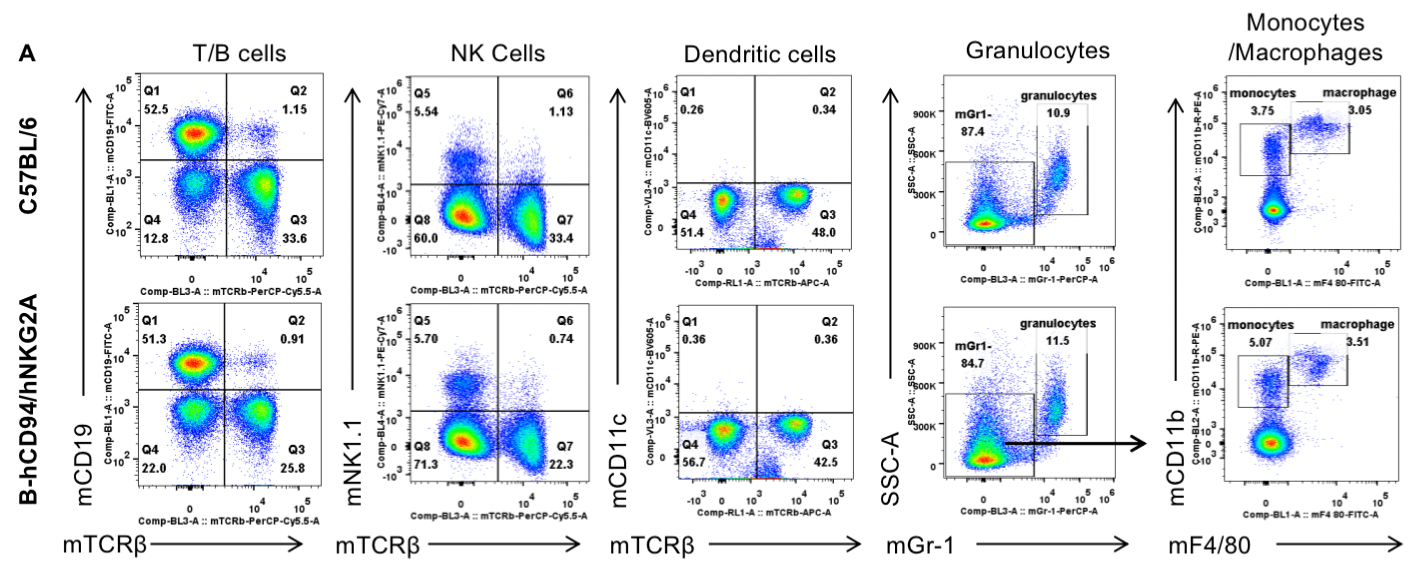
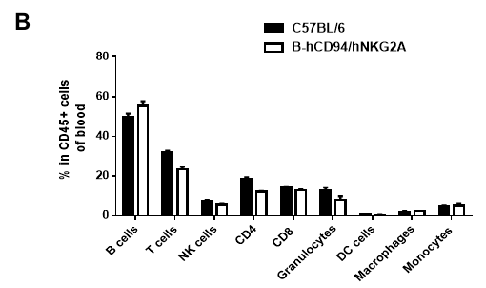
Analysis of blood leukocyte subpopulations by FACS
Blood were isolated from female C57BL/6 and B-hCD94/hNKG2A mice (n=3, 6 weeks-old) and analyzed by flow cytometry to assess leukocyte subpopulations. (A) Representative FACS plots gated on single live CD45+ cells for further analysis. (B) Results of FACS analysis. Percentages of T, B, NK cells, monocytes/macrophages, and DC were similar in homozygous B-hCD94/hNKG2A mice and C57BL/6 mice, demonstrating that introduction of hCD94/hNKG2A in place of its mouse counterpart does not change the overall development, differentiation, or distribution of these cell types in blood. Values are expressed as mean ± SEM.
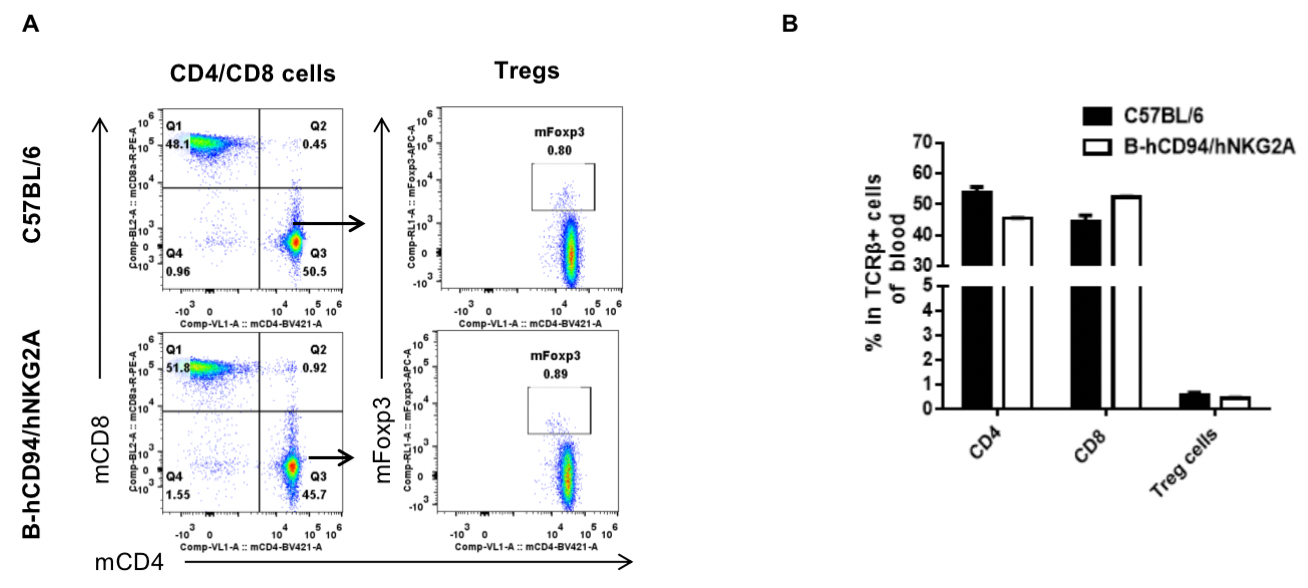
Analysis of blood T cell subpopulations by FACS. Blood were isolated from female C57BL/6 and B-hCD94/hNKG2A mice (n=3, 6 weeks-old) and analyzed by flow cytometry for T cell subsets. (A) Representative FACS plots gated on TCRβ+ T cells and further analyzed. (B) Results of FACS analysis. Percentages of CD8+, CD4+, and Treg cells were similar in homozygous B-hCD94/hNKG2A and C57BL/6 mice, demonstrating that introduction of hCD94/hNKG2A in place of its mouse counterpart does not change the overall development, differentiation or distribution of these T cell subtypes in blood. Values are expressed as mean ± SEM.
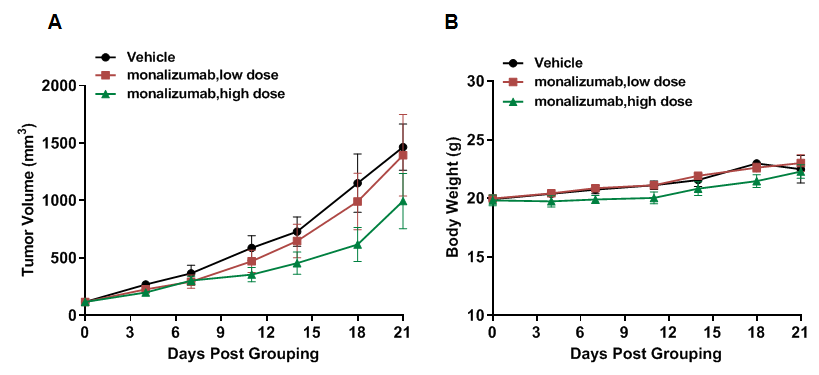
Antitumor activity of anti-human NKG2A antibody in B-hCD94/hNKG2A mice. (A) Anti-human NKG2A antibody inhibited hHLA-E MC38 tumor growth in B-hCD94/hNKG2A mice. Murine colon cancer hHLA-E MC38 cells were subcutaneously implanted into homozygous B-hCD94/hNKG2A mice (female, 6-7 week-old, n=5). Mice were grouped when tumor volume reached approximately 100 mm3, and treated with anti-hNKG2A antibody at doses and schedules in panel A. (B) Body weight changes during treatment. As shown in panel A, anti-human NKG2A antibody (monalizumab, in house) were efficacious in controlling tumor growth in B-hCD94/hNKG2A mice, demonstrating they provide a powerful preclinical model for in vivo evaluation of anti-human NKG2A antibody. Values are expressed as mean ± SEM.

Combination therapy of Tecentriq and Monalizumab
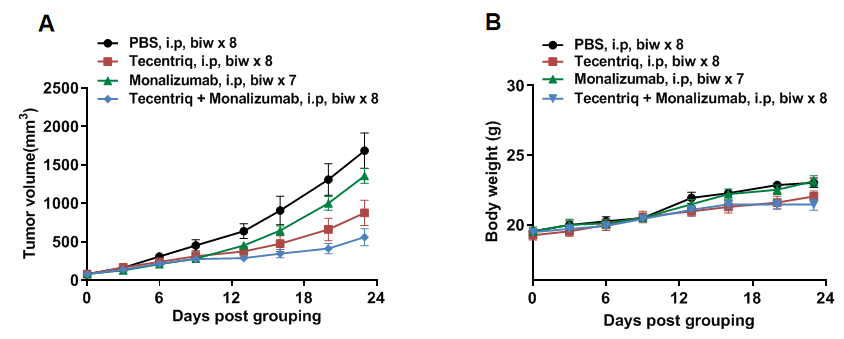
 苏公网安备:32068402320845号
网站建设:北京分形科技
苏公网安备:32068402320845号
网站建设:北京分形科技






 010-56967680
010-56967680 info@bbctg.com.cn
info@bbctg.com.cn